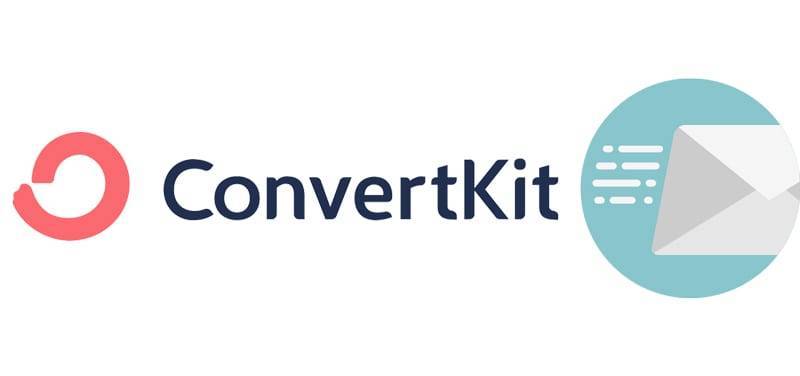What Is ConvertKit?
ConvertKit is a fully-featured email service provider (ESP) made by Nathan Barry. Because of its convenience, ease of use, automation, and other features it’s one of the quickest developing email marketing organizations around. It likewise offers adjustable sign-up forms and landing pages to help get more email subscribers.
What Makes ConvertKit Different Than Other Email Marketing Tools?
- ConvertKit is not difficult to use, powerful, and its paid plans are reasonably priced. They additionally offer a free landing page plan.
- ConvertKit is intended for one sort of target crowd: online creators (like bloggers and YouTubers). Which implies that there aren’t a great deal of internet business centered features that you need to bother with.
- ConvertKit utilizes technology that makes creating email templates and landing pages easier than befofe with an easy to use interface.
Key Features
ConvertKit’s interface is organized into five sections.
- Subscribers: the people who have subscribed to your email list.
- Landing Page & Forms: ConvertKit offers a wide variety of tools to create responsive landing page templates and forms included within all of the pricing tiers.
- Broadcasts: this is a one-off email to either parts of your list or the entire list.
- Sequences: these sequences allow you to send follow up emails automatically
- Automations: these tools help you send emails based off customers actions with the email such as clicking a link or opening the email.
Subscribers
Essentially every email specialist organization charges dependent on the size of your email list. However, ConvertKit was one of the first to do so dependent on the quantity of extraordinary endorsers. In pragmatic terms, this implies that there’s no twofold tallying if a similar individual buys in through different sign-up structures or winds up in more than one deals pipe.
With that in mind you can do the following with this tab.
See Subscriber Overview Data
On the Subscribers tab, you can see your absolute number of endorsers and development in supporters over the long run.
You additionally gain admittance to details like normal open rate, normal snap rate and absolute messages sent.
It’s fundamentally a dashboard to perceive how your rundown is developing, and how individuals are associating with the messages that you send.
Segments and Tags
You can also see your segments and tags, which allows you to organize all of your subscribers data.
You can label individuals consequently dependent on when they joined, which of the connections in your messages they’ve tapped on, and substantially more. And afterward you can make sections from these various labels.
For instance, suppose you simply needed to send a pamphlet about email promoting to individuals that have opened a bulletin on that point.
Indeed, you’d basically need to label anybody that opened one of those messages. At that point, make a section around that gathering.
At last, advise ConvertKit to just send that bulletin to those individuals.
You can obviously join various labels together to get super focused with your messages. In any case, in my experience, this is more difficulty than its value.
Sign Up Form
Another critical snippet of data about your endorsers is the structure they came in on. I’ll speak more about structures later. However, for the present, simply remember that at whatever point somebody joins to your email list on ConvertKit, the select in structure they utilized will be always saved as a feature of their endorser profile.
For what reason is this useful?
For instance, the substance on our blog is partitioned into two fundamental classifications: YouTube and SEO.
There’s some hybrid there. Yet, by and large, individuals that need to become their YouTube diverts aren’t too keen on positioning higher in Google. What’s more, people that need to improve their Google rankings would prefer not to peruse content about getting more views on YouTube.
Which is the reason labeling people that join from our various structures is too useful. That way, we can send our YouTube and Google stuff to individuals that need it. All in all: this is fundamentally a tag for new endorsers that doesn’t expect them to do anything extra.
Automations
“Marketing Automation” is the huge popular expression in the realm of email promoting at this moment. What’s more, all things considered: promoting computerization can assist you with sending substance and offers to focused sections of your crowd.
Be that as it may, apparatuses like Drip are incredible for setting up muddled channels and computerizations. Be that as it may, they have a lofty expectation to absorb information. So on the off chance that you just need to make some basic computerizations dependent on a couple of practices, ConvertKit is your smartest option.
That is on the grounds that ConvertKit has a hearty yet-straightforward computerization instrument.
Automations in ConvertKit comprise of two primary parts: triggers and activities. The trigger is an occasion or conduct that begins the mechanization, and the activity is the thing that you need to have occur.
For instance, you can set up an evergreen item pitch that comprises of numerous email groupings (a warmup succession and a dispatch arrangement). At that point, on the off chance that they haven’t yet purchased the item, you can consequently offer a less expensive substitute item. Lastly, that equivalent grouping can send extra onboarding email to the individuals who purchase and labels them as buyers.
ConvertKit offers 6 distinctive automation templates for things like dispatching an item, facilitating an online class (with computerized online class enrollment and follow-up messages), and customizing content dependent on how your endorsers answer an inquiry.
You can also create new automations from scratch, using triggers such as “joins a form” or “purchase.”
From that point, you can set them up to get email successions, add or eliminate them from labels, and the sky is the limit from there.
Pro Tip: have a go at affixing numerous automations together, with the goal that when one automation completes, another is initiated dependent on an alternate arrangement of rules. That way, more seasoned supporters never lose all sense of direction in the mix and are getting new substance from you consistently.
Landing Pages and Forms
ConvertKit’s underlying structures and point of arrival usefulness is really strong. Particularly when you consider this component is free. You can set them up all alone in minutes without expecting to pay for any outsider devices or recruit a costly originator.
Forms
Forms are in a real sense the form where somebody presents an email address.
Forms are the passage highlight your email list for each supporter that you get in your ConvertKit account.
Regardless of whether you’re not implanting ConvertKit’s forms on your site (for instance, you rather use something like Leadpages, a WordPress module or OptinMonster for the front-end) you’ll actually have to set up a form in your ConvertKit account for those subscribers of be attached to.
Your initial step is to make another form.
Then, choose how you want to use each form on your site.
You can embed forms on your site directly.
Or trigger them to pop up, for example, when someone clicks a link to download one of your content upgrades.
You can even trigger forms to show up based on exit intent (like a popup). This is called “Modal” in ConvertKit terminology.
Note: By default, your forms are all set to double opt-in. In ConvertKit parlance, double-optin is known as sending an “Incentive Email”.
In my experience, this should stay checked as it reduces the chances of deliverability problems down the road.
Landing Pages
In contrast to forms, greeting pages are carefully discretionary. Like forms, they’re responsive and adaptable, yet not at all like forms they’re facilitated on an independent page.
In the event that you as of now use presentation page programming, or work with a creator, you most likely will not have to utilize this component.
Yet, in the event that you would prefer not to make new greeting pages for each and every digital book, report or lead magnet that you make, Convertkit’s presentation pages make it simple to scale up.
ConvertKit presently offers 18 diverse landing page layouts, which you can customize to fit the look and feel of your site.
Broadcasts and Sequences
There are two main two types of emails you can send in ConvertKit: broadcasts and sequences.
Broadcasts
A broadcast is a one-time email you can send to your entire list (or to just a segment of it).
For example, whenever we publish a new blog post, we send out a broadcast to out entire email list.
But when we have a course launch, we usually only send emails to people that are interested in that course.
These are still transmissions. In any case, rather than going out to the whole show, it’s simply going out to a fragment that we made.
Sending a transmission email is straightforward: you should simply pick who to send it to, compose the email and send it. Notwithstanding, you unquestionably need to review it first. ConvertKit’s interface works effectively of addressing what the genuine email will resemble. In any case, nothing beats a genuine test!
One thing you may see when utilizing ConvertKit to make your messages is that they don’t offer any email layouts.
The default email is a plain-text email with no CSS.
Tip: Use the A/B test highlight to test two distinctive titles. ConvertKit will part subject lines on the principal 30% of your messages it sends (sending 15% with each headline). What’s more, the title that gets more opens will be utilized for the excess 70% of the messages. This is a cool component that solitary ConvertKit has.
Sequence
A sequence is a series of emails, with a period of delay in between each (for example, a day or two).
You can set them to send out with relative send dates (meaning X number of days after the person subscribed, as opposed to an exact calendar date). This makes them perfect for onboarding sequences, email courses, and evergreen product launches.
Customized Broadcasts and Sequences
Broadcasts and successions can be redone dependent on your endorsers’ names, labels, and that’s just the beginning. For instance, will naturally be supplanted with the main name on document for that supporter.
To get somewhat more progressed, you can likewise embed whole squares of text for endorsers who have certain labels, and different squares for supporters who don’t.
This is obviously a super advanced feature that most businesses would never use. But if you want to send super-personalized emails, ConvertKit makes this easy via the “personalize” options shown when drafting a new broadcast or sequence email.
If you enjoyed reading this article then head over to ConvertKit! Plans start at just $29/month or you can try for free up to 1,000 subscribers.

